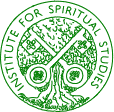
|
|
Queen Mary and
|
A seminar presented by Judith Richards on August 14, 2008Just as society changes gradually or suddenly, from the top down and from the bottom up, so do religious institutions, particularly those linked with rulers both secular and religious. The Tudor period in English history (1485-1603) saw such changes and Professor Judith Richards, in her seminar to the Institute for Spiritual Studies on August 14th, found it necessary to cover the period from Henry VIII and Edward VI (1509-53) when explaining the remarkable changes in church and state at the top between 1553 and 1558, the latter date being Elizabeth's accession to the throne. Mary and Elizabeth had had an ambivalent relationship until their father's death in 1547. Mary, an "evangelical", wanted some church reform and encouraged humanist tendencies. Conservative catholics and reformers were opposed to each other, but both contained diverse groups within them. This diversity can be seen in some Henrician period examples. Henry and his six queens all took Mass. Although purgatory was "banned" by Henry, he left money for a daily mass to be said for his soul. Yet he died as 'Supreme Head of the Church'. Judith Richards noted that the 1539 Bible contained a title page which had 'God' printed in small letters and 'Henry' in much bigger print, which she said was "handing out a religious truth." Henry determined doctrine. Thus the 1547 six articles of faith were:
With the death of Henry VIII, a new council was assembled during Edward VI's minority, and conservatives were pushed out. In July 1547, salvation by faith was proclaimed and transubstantiation was undermined. Edward's elder sister Mary was worried; in a letter to Seymour, the Protector, she said she would be an obedient child to her father, that is to Henry's laws. This implied that the law couldn't be changed till young Edward was an adult. Meanwhile, Elizabeth at court in 1547 was "demure" and "took advantage of religious differences to promote herself." Mary, out of favour, was partly sidelined.The rivalry between the two sisters was both personal and religious. If one was legitimate, the other was illegitimate! The protestant religious changes between 1547 and 1553 during Edward's rule were instigated then approved by Parliament. But when Edward died in 1553, to everyone's surprise the new monarch, proclaimed by the ruler Northumberland, was Lady Jane Grey. This, said Judith Richards, was because Elizabeth and Mary were both "illegitimate", unmarried and would possibly marry a foreigner, probably a catholic. Richards described the quick end to Grey's nine-day rule, due to Mary's popularity and legal claim to the throne. By the end of 1554, Mary's birth had been legitimized, Mary had slighted Elizabeth at court, Mary had wed Philip of Spain, and protestant Wyatt had led a rebellion which had been suppressed. Yet Mary in her reign did not try to recover the monasteries Henry had sequestered. Mary had her sister put in the Tower, but later Elizabeth was allowed to retire to the country. To use Richards' words, Elizabeth remained "diffident about religion." In 1558 Mary lost Calais in a brief war fought against France. She died the same year. The relationship with the papacy (which was pro-French) had broken down. So, in 1558 England was legally catholic, at war, and dependent on Spanish support to regain Calais. Elizabeth believed she had been maltreated by Mary. Judith Richards described the magnificence of Mary's funeral at length, with 3000 pounds being granted by Council as an advance amount towards it. Elizabeth's immediate political position was precarious. Old people and catholics stayed quiet. Young people and "heretics" were now in charge. Richards noted that the bishop of Winchester was detained after he warned in his funeral sermon against "Genevan wolves" and their religious changes. Mary, he intoned, had chosen "the best path." A planned monument to Mary and catholicism was not built. Judith Richards said that even before Elizabeth's coronation, Mary was a "non-person". In 1561, in fact, all the Westminster Abbey altars were taken down and piled up on Mary's tomb. The professor said that Elizabeth's religion was linked to the past, but with opportunism. She was a 'full-on' catholic, at a time when the 16th century papac was not respected. Regarding loyalties, Judith said that overall in Mary's reign protestants were urged to recant. By the end of the 17th century it was expected that subjects would have the same religious faith as their monarch. On the other hand, in 16th century England, people were expected to show obedience to the monarch. This was Tudor doctrine. So the church remained papist, where people read missals and local people built tombs and windows. The 1571 papal bull that urged English people to disobey their 'heretic queen' changed the balance between church and state, between public and private belief, for the rest of her reign. Yet the influence of the protestant exiles on Elizabeth had been 'zilch'. For Elizabeth the two essentials were pragmatism and personal belief.
This site is hosted by St Peter's Eastern Hill,
Melbourne, Australia. |